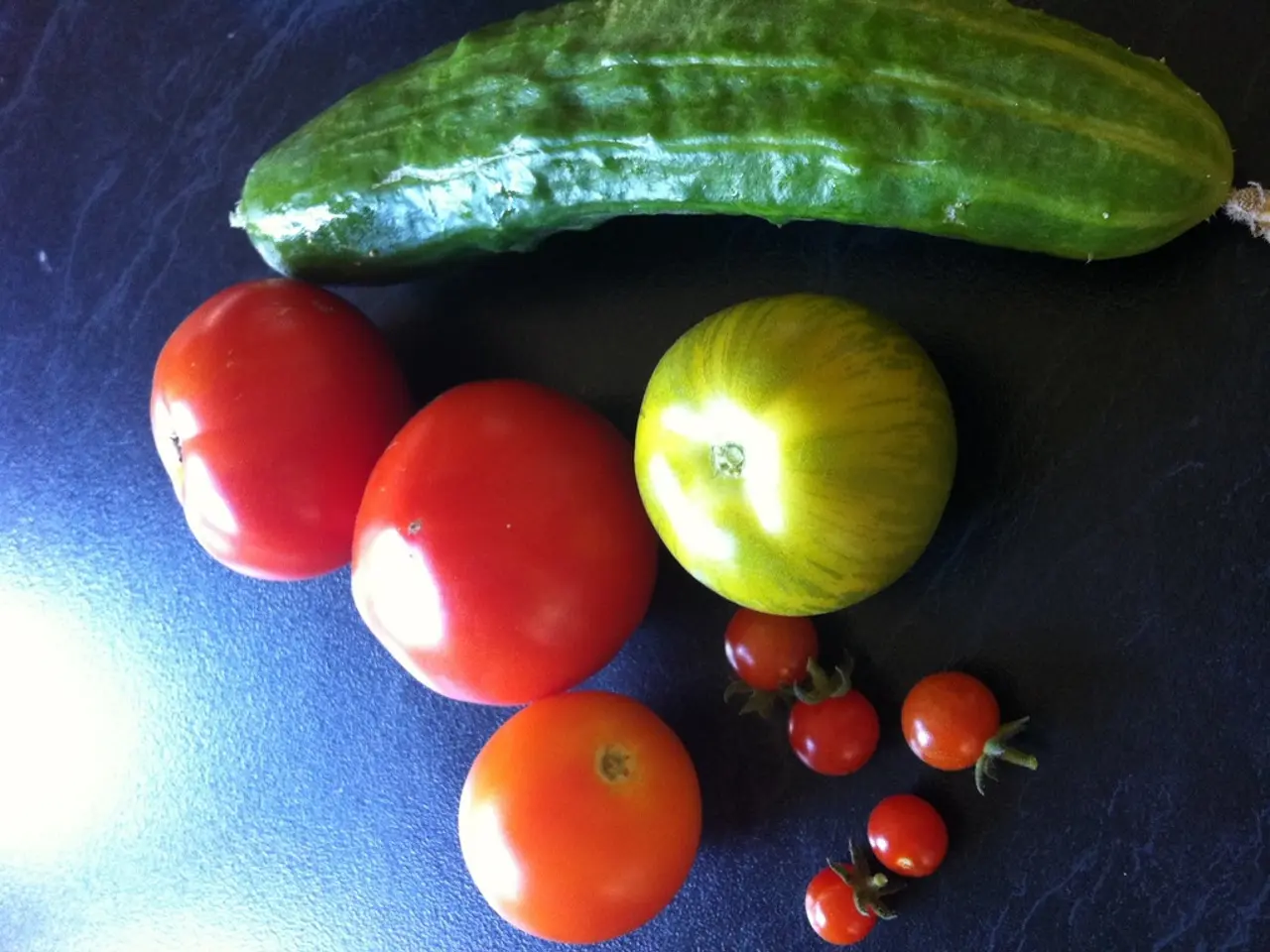Home-Grown, Scientifically Supported Foods for Hydration
Incorporating hydrating foods into your diet is essential for maintaining good health, and what better way to ensure a consistent supply than growing them at home? Here's a list of high-hydration foods (with over 90% water content) that are not only easy to cultivate but also recommended by health experts.
Top Hydrating Foods (Over 90% Water Content):
- Lettuce (96%) - A versatile and easy-to-grow crop that thrives in most climates. Rich in vitamins and minerals, lettuce is an excellent addition to any salad or sandwich.
- Cucumbers (95%) - A common home garden favourite, cucumbers are high in vitamins K and C, and potassium. They love warmth, sun, and consistently moist soil.
- Celery (95%) - This low-calorie, hydrating snack vegetable is simple to grow and is rich in vitamins and minerals, making it a great choice for any home garden.
- Tomatoes (95%) - A popular garden vegetable, tomatoes are high in vitamin C and lycopene. They are a great addition to any dish, from salads to sauces.
- Zucchini (95%) - This versatile summer squash is rich in vitamin C and potassium. It requires regular watering to produce tender, non-bitter fruits.
- Watermelon (92%) - While not quite reaching the 90% water mark, watermelons are still highly hydrating and nutritious. They flourish in warm climates with full sun and rich, loose soils.
Additional Hydrating Options:
- Strawberries (91%) - Easy to grow in containers or in the ground, strawberries are hydrating and loaded with vitamin C.
- Cantaloupe (90%) - Similar growing conditions to watermelon, cantaloupe is a good source of vitamin A and potassium.
- Bell Peppers (92%) - While slightly over 90%, some varieties may vary, but bell peppers are hydrating and contain vitamin C and antioxidants.
- Peaches (89%) - A bit lower in water content but still hydrating and nutritious, peaches are ripe with juice and provide vitamin C and potassium.
- Oranges (88%) - Requiring specific climates, oranges are highly nutritious and provide a good source of vitamin C.
- Grapefruit (88%) - Similar to oranges in climate requirements, grapefruit trees grow in frost-free, sunny locations and require regular watering and fertilization.
By incorporating these high-water foods into your diet and garden, you can boost your daily hydration levels and enjoy the benefits of these nutritious and easy-to-grow options.
- Incorporating lettuce, a vegetable with 96% water content, into your home garden is an effortless way to cultivate hydrating foods.
- A potassium-rich garden favorite, cucumbers (95% water content), also known as 'salad cucumbers', are easy to nurture for a constant hydration supply.
- The simplicity of growing celery (95% water content), a low-calorie, hydrating snack vegetable, adds a health-and-wellness boost to your home-and-garden lifestyle.
- Tomatoes, with a water content of 95%, are recommended by scientists as a nutritious addition to any fitness-and-exercise routine and home-grown food-and-drink diet.
- Zucchini, a versatile summer squash (95% water content), is a valuable source of vitamins and minerals for both your meals and garden space.
- While watermelons fall slightly short of the 90% water mark (92%), they still offer numerous health benefits and can be flourished in your home-and-garden decor.
- Strawberries, with 91% water content, are easy to cultivate and are a delightful addition to the home-and-garden gardening scene, providing an extra boost of vitamin C to your wellness journey.
- The selection of your garden can extend beyond vegetables; adding cantaloupe (90% water content) or bell peppers (92%, in some varieties) can introduce more hydrating options to your lifestyle.




